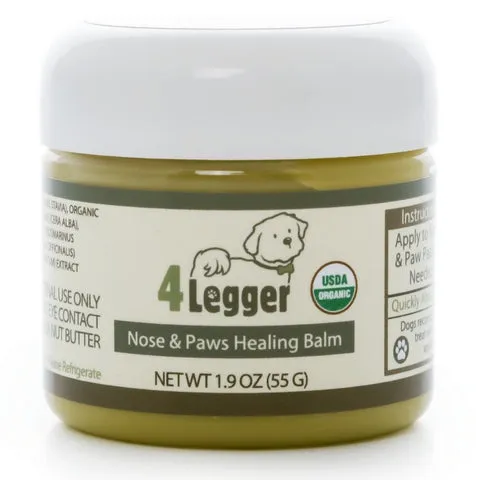Many dog owners, seeking to soothe dry or cracked paw pads, might reach for petroleum jelly, often seen as a versatile remedy for various skin issues. However, what seems like a simple solution can actually pose hidden risks for your beloved canine companion. At Dog Care Story, we believe in providing accurate, high-quality information to help you make the best choices for your pet’s well-being. This article will delve into why Petroleum Jelly For Dog Paws might not be the best option and explore safer, more effective alternatives.
What Exactly Is Petroleum Jelly?
Petroleum jelly, a common household staple, has a history dating back to 1859. Robert Chesebrough discovered “rod wax,” a troublesome byproduct of early oil drilling, and refined it into the product we know today. In 1872, Chesebrough patented the process for creating petroleum jelly, eventually leading to the formation of the Vaseline company. The refining process typically involves vacuum distillation of crude oil followed by filtration, often through bone char, to purify the substance. While brands like Vaseline claim to highly refine their petroleum jelly to remove potentially carcinogenic contaminants, this level of purification isn’t guaranteed across all brands.
The Hidden Dangers of Petroleum Jelly for Your Dog
Understanding the composition and how dogs interact with substances applied to their bodies is crucial. When it comes to petroleum jelly for dog paws, several factors raise concerns:
Firstly, not all petroleum jelly products are created equal. Many manufacturers do not employ the same rigorous triple-refining and purification processes as some leading brands. This means that many petroleum jelly products on the market may still contain traces of carcinogens or other impurities that are undesirable for both humans and pets.
Secondly, dogs instinctively lick their paws. Any substance applied to their paw pads will inevitably be ingested. If a product contains harmful chemicals or contaminants, these can be absorbed into your dog’s system, potentially leading to health issues over time. Choosing a product that is non-toxic and safe for ingestion is paramount for your pet’s safety.
Lastly, petroleum jelly is, by its very nature, a refined hydrocarbon derived from crude oil. For environmentally conscious pet owners who prioritize sustainability and eco-friendly products, using a petroleum-based product can conflict with these values. Opting for sustainably grown and sourced ingredients aligns better with a green lifestyle.
 A dog owner gently applying balm to a dog's paw, highlighting careful pet care.
A dog owner gently applying balm to a dog's paw, highlighting careful pet care.
How Petroleum Jelly Actually Affects Dog Paws
Contrary to popular belief, petroleum jelly does not intrinsically contain moisturizing properties. Its primary function is to create a barrier on the skin’s surface, effectively locking in any existing moisture. While this might sound beneficial, it doesn’t add hydration to dry skin.
Furthermore, this occlusive barrier can sometimes do more harm than good. Petroleum jelly can block skin pores, trapping natural skin oils and dirt. This creates a warm, moist environment underneath the barrier, which can become an ideal breeding ground for yeast and fungus. Instead of healing, you might inadvertently contribute to skin infections or exacerbate existing conditions.
Can Petroleum Jelly Cause Diarrhea in Dogs?
While small amounts of petroleum jelly are unlikely to cause severe adverse effects, ingesting large quantities can indeed act as a laxative. While the occasional lick might not lead to immediate issues, there’s no compelling reason to risk even mild gastrointestinal upset when safer and more beneficial alternatives are readily available. Prioritizing your dog’s comfort and health means choosing products that are not only effective but also completely harmless if ingested.
Safer Alternatives for Your Dog’s Paws and Nose
When it comes to caring for your dog’s dry, cracked paw pads or nose, natural, pet-safe balms offer a superior and risk-free solution. Products specifically formulated for pets often contain ingredients like organic beeswax (a natural paw wax), nourishing hemp oil, and deeply moisturizing shea butter. These ingredients work synergistically to provide genuine hydration, create a breathable protective barrier, and soothe irritated skin, all while eliminating the risks associated with petroleum jelly.
High-quality paw balms are crafted with sustainably grown and sourced ingredients, ensuring that they are not only effective but also safe and non-toxic. If your dog licks their paws immediately after application, there’s no cause for concern, as these balms are designed to be entirely pet-friendly. They offer fast-acting relief and long-term benefits, promoting healthy, supple paw pads and noses without any hidden dangers.
Prioritize Your Pet’s Paw Health with Safe Choices
Caring for your dog’s paw pads is an essential part of their overall health and comfort. While petroleum jelly might seem like a quick fix, its potential for containing carcinogens, environmental impact, and its tendency to create a breeding ground for fungi make it a less-than-ideal choice. Opting for specialized, natural paw balms ensures that you are providing genuine moisture and protection without any hidden risks. Always choose products with ingredients you trust, and when in doubt, consult with your veterinarian for personalized advice on your dog’s paw care needs. Your furry friend deserves the safest and most effective care.
